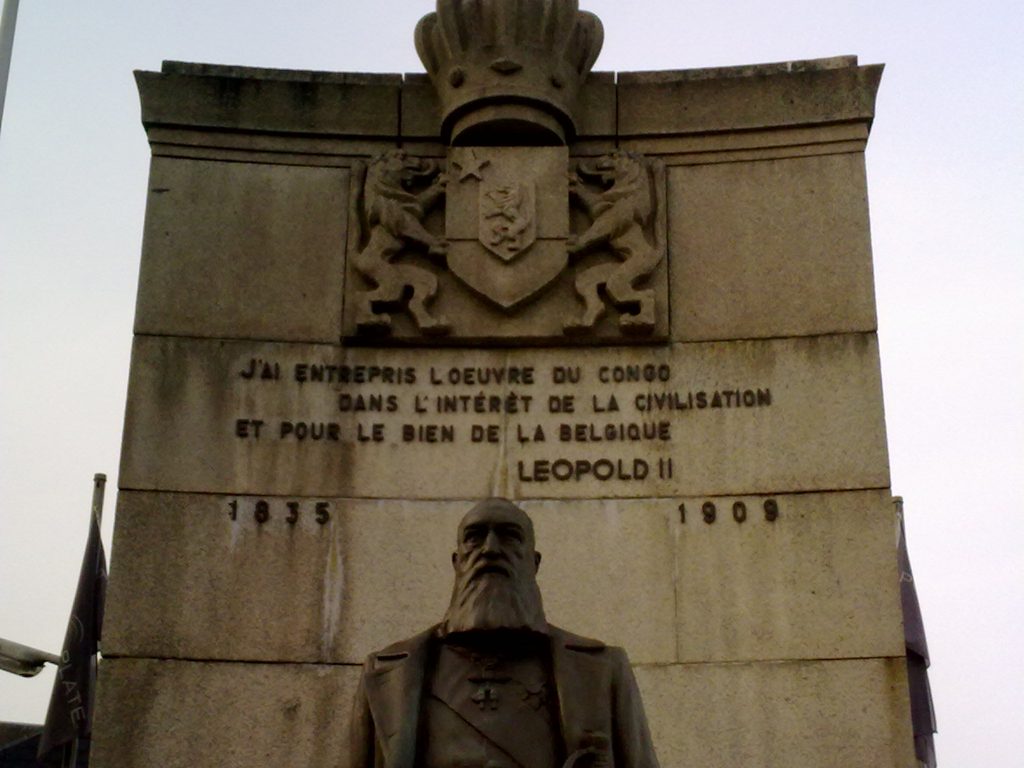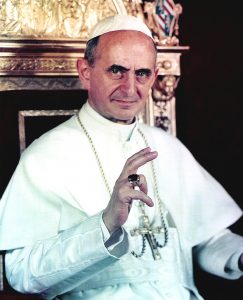
“Village set on fire. Dinner then return.”
These cold words come from the diary of a Belgian officer in the Congo Free State.1 He provides a haunting image of daily life in the colony: Village after village burned, one family after another dead. The Belgian army would destroy an entire town, mutilate the bodies, then leave for dinner without a second thought. These officers were acting under the command of a king, Leopold II, who had never set foot in Africa himself.
Five thousand miles away and over a century later, a statue of Leopold II looms over the streets of the historic city of Arlon, Belgium. Above him, a quote: “I undertook the work of the Congo in the interest of civilization and for the good of Belgium.”2 The monument is one of many throughout Belgium that revere the infamous king as a leader who worked toward the betterment of the country. The statue and the diary entry share an eerieness to them—a chilling nonchalance in the way they reference Leopold’s violence.
Who was Leopold II, and what exactly did he do in the Congo? The story of his project and its aftermath is deeply gruesome. In a quest to advance Belgium’s economy and his own wealth, Leopold went extraordinarily far, pillaging a land he had never set foot in. His conquest would leave deep wounds on the Congo and its people, wounds that remain to this day.

The story of Leopold and the Congo begins in the 1830s, before he became king. Belgium gained its independence in 1830, with his father, Leopold I of Saxe-Coburg-Gotha, named king under a constitutional monarchy in 1831.3 Belgium’s relative newness and small size gave it a disadvantage compared to other European powers, such as Great Britain and France. Leopold I did much in terms of diplomacy to gain recognition throughout Europe, but during his lifetime, Belgium could only dream of reaching the level of industrialization its richer neighbors had.4 This would change once his son took power.
From a young age, Leopold II had proved himself interested in politics. He was also known for his strategizing and stealthy nature. At one point, his father compared him to a fox: “I watched a fox which wanted to cross a stream unobserved: first of all he dipped a paw carefully to see how deep it was, and then, with a thousand precautions, very slowly made his way across. That is Leopold’s way!”5 It would continue to be Leopold’s way well into adulthood, and it would mark his strategy when he inherited the throne in 1865.
“Petit pays, petit gens,” the young heir said of Belgium. Small country, small people.6 He had hopes to build up the small country not only by establishing soft power within Europe, as his father had, but by taking part in colonization. By the time Leopold took power, major European countries had industrialized and were beginning the period of colonization known as the “Scramble for Africa.” Some Belgians had expressed interest in overseas expansion, but Leopold would set out to make this a reality—both for national and for personal interests.7 Given Belgium’s position in the international sphere, his dreams of wealth would be farfetched without the stealthiness of a fox.
Just as the fox waited patiently to sneak across the stream, Leopold waited about ten years for his plan to be fully mapped out and ready for execution. The Scramble for Africa was in full swing, but it had also caused conflict between imperial powers as they divided the territory, as well as arousing resistance from African leaders. Thus, in an attempt to establish a kind of international policy in Africa, European nations would have to validate their claims before occupying new territory.8 Leopold wanted to claim a part of the Congo Basin in central Africa due to its rich supply of rubber and minerals; he also wanted full control over the resources collected, which meant it would have to be his private territory rather than a settlement owned by the government of Belgium. To validate this claim, he used a humanitarian guise. Leopold founded the International Organization of the Congo (IAC)—a name intentionally and deceptively similar to that of the International African Association (IAA). Both associations were intended for African exploration, but the IAA was older and had a “philanthropic” reputation. The IAC was owned by Leopold, but because of its confusing name, it would soon gain the IAA’s positive connotations.9

From 1874 to 1884, Leopold commissioned an American explorer named Sir Henry Morton Stanley to visit the Congo region under the IAC.10 The Congo River Basin is far from a homogenous region; it is home to over 200 ethnic groups.11 Stanley’s job was to build relationships with these ethnic groups and, using the IAC’s philanthropic front, convince them to sign treaties that would give up control over the territory.12 He claimed that Leopold and his organization would end the “Arab” (a misnomer for Swahili-speaking East African) slave trade and build infrastructure.13 Once the area Leopold wanted to claim had been mapped out, he now had something to present to the rest of Europe—a way to prove that the IAC had solid reasons to “assist” the Congo. He presented his claims at the Berlin Conference, held from 1884 to 1885. The IAC’s control was recognized: Leopold had a new backyard larger than his home country. The land was owned not by Belgium, but by Leopold and his organization alone. Ironically, he named his new territory the Congo Free State.14
Thus began one of the deadliest eras of European colonialism. Belgian authorities did, in fact, “free” slaves as promised—only to send them to work for rubber, ivory, and other natural resource companies. These companies were contracted to extract the most natural resources for the highest profit; the local population provided a cheap means to do so.15 The Force Publique, a military force run by Belgian officers and carried out by captured Congolese men, kept close watch on workers, treating them like slaves.16 As E.J. Glave, a traveler formerly with Stanley, put it:
If the Arabs had been the masters it would be styled iniquitous trafficking in human flesh and blood, but being under the administration of the Congo Free State, it is merely a part of their philanthropic system of liberating the natives.17

Rubber, the most popular natural resource, gained the nickname “red rubber” in reference to the bloodshed caused by the industry. Congolese workers, some as young as age five, were coerced into collecting rubber from trees in the rainforest, then taking it to the Belgian commissioner. The rubber companies’ demands were not met without resistance; there were uprisings by kingdoms and even within Leopold’s army—but they were met with crushing violence.18 Villages whose residents refused to or failed to acquire the desired amount of rubber would be burned down.19
As if this practice was not gory enough, another disturbing one soon emerged. To prove that they had used their bullets to kill remaining survivors instead of wasting cartridges, soldiers were to provide the severed heads or hands of victims. At times, authorities would misaim or use cartridges for hunting, in which case they would sever the limbs of victims without killing them.20
A particularly harrowing photograph taken by a missionary in 1904 captures the horror of living through these atrocities. In the photo, a man named Nsala of Wala stares at his five-year-old daughter’s severed hands and feet. His daughter suffered this punishment because she had not collected enough rubber.

In another account, a Congolese woman named Ilanga described how she and her family had been kidnapped by Belgian forces:
On the sixth day we became very weak from lack of food and from the constant marching and sleeping in the damp grass…and my husband, who marched beside us with the goat, could stand no longer, and so he sat down beside the path and refused to walk more. The soldiers beat him on the head with the end of his gun, and he fell upon the ground. One of the soldiers caught the goat, while two or three others stuck the long knives they put on the ends of their guns into my husband.21
Nsala’s photograph and Ilanga’s firsthand account provide a glimpse into the utter grief experienced millions and millions of times over by the Congolese for twenty-three years. The voices of people who had gone through what they had would scarcely make it to Europe, and the accounts and pictures we have today encompass only a small fraction of their experiences.22
Leopold II never visited Africa, and so he lived comfortably removed from the trauma of the grieving families and exploited workers. In addition to funding propaganda to gain public support of the colonization of the Congo, he built extensive infrastructure in Belgium (much of it standing today) and made a remarkable amount of personal wealth.23 The conditions in the Congo Free State remained hidden behind the new palace’s shiny façade, as well as by the Belgian perception of the Congolese as a helpless, uncivilized group of people who needed Europeans to modernize them. As Nsala of Wala grieved, Leopold strolled through his new Royal Garden, surrounded by crystalline greenhouses and the scent of camellias. He had reached the height of his power.

Toward the end of the nineteenth century, the façade began to crumble. George Washington Williams was among the first to bring the issue to public attention. Williams was a journalist, historian, and the first African-American man to be elected to the Ohio House of Representatives. In his 1890 pamphlet An Open Letter to His Serene Majesty Leopold II, Williams exposed the inhumanities of the Congo Free State in detail, calling for an investigation of Leopold and his colonial practices.24
The records of European missionaries, such as the one who photographed Nsala of Wala, were also immensely important to bringing international attention to the Congo Free State. They recorded the human rights abuses as they occurred, and notably, the faces, names, and words of the Congolese themselves. Such accounts inspired Joseph Conrad to write the famous novella Heart of Darkness and E.D. Morel to become an outspoken anti-imperialist activist and journalist. Soon, the international community woke up to the horrors of Leopold’s exploits.25
Leopold’s once-successful propaganda campaigns lost traction. After much struggling on his behalf to sway public opinion, he had no choice but to relinquish control to the Belgian parliament in 1908. The Congo Free State was over, replaced with a new Belgian Congo. This Congo was the colony of the entire constitutional government, rather than of an individual such as Leopold.26 Leopold died a year later. His coffin was carried through the streets to booing crowds.27
The death toll of the Congo Free State is unknown. Estimates range from eight to ten million lives, and are debated to this day—though, as historian Adam Hoschschild writes, “if this number turned out to be even half as high…the Congo would have been one of the major killing grounds of modern times.” Whether the true number lost is eight million, ten million, or somewhere in between, it was significant enough for the region to never truly recover.28 Additionally, while conditions improved after Leopold’s relinquishment of control, Congo continued to suffer exploitation under Belgian rule.29
This may raise the question: Did Leopold win? Did he really achieve lasting glory as “The Builder King”?
In the twenty-first century, movements such as the Black Lives Matter movement have fought to bring greater attention to Leopold’s atrocities in the Congo, as well as greater action to reverse it. It was one thing for Belgians to boo Leopold at his funeral and for the international community to express disapproval at him specifically, but an entirely different thing to acknowledge that Leopold was part of a colonial system that included the Belgian government and other imperialist nations. In a postcolonial world already difficult for countries in the global south to navigate, the modern-day Democratic Republic of the Congo has had the additional burden of recovering from this remarkably deadly era, while Belgium remains built on its exploitation with negligible repercussions.30 The Africa Museum in Tervuren—the same museum Leopold originally founded as a human zoo to exhibit the Congolese—remains standing, along with monuments depicting “The Builder King.” Even today, the government has neither acknowledged nor taken direct action to address its lasting impact on the Congo.31

In 2020, some of the largest protests against racism occurred in countries throughout the world. In Belgium, protests confronted the country’s history in the Congo as well as the government’s indifference (or even glorification) of it. Many advocated for the dismantling of statues.32 Though this is only one symbolic step, it represents increasing public awareness of Leopold’s violent history.
Whether increased historical education, public awareness, and possible government action will change its devastating effects remains to be seen. Until then, Leopold’s legacy remains a haunting presence. It lingers in the exploitative industries of the modern-day Democratic Republic of the Congo and in the peaceful gardens of Laeken built on blood money.
- Manohla Dargis, “The Horrors of Belgium’s Congo,” The New York Times, October 21, 2005, sec. Arts, https://www.nytimes.com/2005/10/21/movies/the-horrors-of-belgiums-congo.html. ↵
- “Monument au roi Léopold II – Arlon,” accessed March 5, 2021, https://be-monumen.be/patrimoine-belge/monument-au-roi-leopold-ii-arlon/ ↵
- “Belgium,” Funk & Wagnalls New World Encyclopedia, December 31, 2020. ↵
- “Belgium,” Funk & Wagnalls New World Encyclopedia, December 31, 2020. ↵
- Adam Hochschild, King Leopold’s Ghost: A Story of Greed, Terror, and Heroism in Colonial Africa (Houghton Mifflin Harcourt, 1999), 34. ↵
- Adam Hochschild, King Leopold’s Ghost: A Story of Greed, Terror, and Heroism in Colonial Africa (Houghton Mifflin Harcourt, 1999), 36. ↵
- Guy Vanthemsche, Belgium and the Congo, 1885-1980 (Cambridge University Press, 2012), 17. ↵
- Michael A. Rutz,King Leopold’s Congo and the “Scramble for Africa”: A Short History with Documents (Hackett Publishing, 2018), 8. ↵
- Adam Hochschild, King Leopold’s Ghost: A Story of Greed, Terror, and Heroism in Colonial Africa (Houghton Mifflin Harcourt, 1999), 65. ↵
- Michael A. Rutz, King Leopold’s Congo and the “Scramble for Africa”: A Short History with Documents (Hackett Publishing, 2018), x. ↵
- “Congo, Democratic Republic of the or Congo,” Funk & Wagnalls New World Encyclopedia, September 30, 2020, 1. ↵
- Adam Hochschild, King Leopold’s Ghost: A Story of Greed, Terror, and Heroism in Colonial Africa (Houghton Mifflin Harcourt, 1999, 72. ↵
- Adam Hochschild, King Leopold’s Ghost: A Story of Greed, Terror, and Heroism in Colonial Africa (Houghton Mifflin Harcourt, 1999, 28, 66. ↵
- “Belgium,” Funk & Wagnalls New World Encyclopedia, December 31, 2020. ↵
- Guy Vanthemsche, Belgium and the Congo, 1885-1980 (Cambridge University Press, 2012), 22-23. ↵
- Adam Hochschild, King Leopold’s Ghost: A Story of Greed, Terror, and Heroism in Colonial Africa (Houghton Mifflin Harcourt, 1999), 124-127. ↵
- Edmund Dene Morel, Red Rubber: The Story of the Rubber Slave Trade Flourishing on the Congo in the Year of Grace 1906 (Nassau Print, 1906), 46-47. ↵
- David Renton, David Seddon, and Leo Zeilig, The Congo: Plunder and Resistance (Zed Books, 2007), 33-35. ↵
- Edmund Dene Morel, Red Rubber: The Story of the Rubber Slave Trade Flourishing on the Congo in the Year of Grace 1906 (Nassau Print, 1906), 47-48. ↵
- Edmund Dene Morel, Red Rubber: The Story of the Rubber Slave Trade Flourishing on the Congo in the Year of Grace 1906 (Nassau Print, 1906), 56. ↵
- David Renton, David Seddon, and Leo Zeilig, The Congo: Plunder and Resistance (Zed Books, 2007), 36. ↵
- David Renton, David Seddon, and Leo Zeilig, The Congo: Plunder and Resistance (Zed Books, 2007), 34. ↵
- Matthew G. Stanard, Selling the Congo : A History of European Pro-Empire Propaganda and the Making of Belgian Imperialism (University of Nebraska Press, 2012), 32-33; “King of the Belgians Leopold II,” Columbia Electronic Encyclopedia, 6th Edition, February 2020. ↵
- George Washington Williams, “(1890) George Washington Williams’s Open Letter to King Leopold on the Congo,” August 20, 2009, https://www.blackpast.org/global-african-history/primary-documents-global-african-history/george-washington-williams-open-letter-king-leopold-congo-1890/. ↵
- Michael A. Rutz, King Leopold’s Congo and the “Scramble for Africa”: A Short History with Documents (Hackett Publishing, 2018), 16-17. ↵
- Matthew G. Stanard, Selling the Congo : A History of European Pro-Empire Propaganda and the Making of Belgian Imperialism (University of Nebraska Press, 2012), 43-45. ↵
- Manohla Dargis, “The Horrors of Belgium’s Congo,” The New York Times, October 21, 2005, sec. Arts, https://www.nytimes.com/2005/10/21/movies/the-horrors-of-belgiums-congo.html. ↵
- Adam Hochschild, King Leopold’s Ghost: A Story of Greed, Terror, and Heroism in Colonial Africa (Houghton Mifflin Harcourt, 1999), 3. ↵
- Guy Vanthemsche, Belgium and the Congo, 1885-1980 (Cambridge University Press, 2012), 29-30. ↵
- “Congo, Democratic Republic of The,” Columbia Electronic Encyclopedia, 6th Edition, March 2021. ↵
- “Leopold II: Belgium ‘wakes up’ to Its Bloody Colonial Past,” BBC News, June 12, 2020, sec. Europe, https://www.bbc.com/news/world-europe-53017188. ↵
- Idesbald Goddeeris, “Colonial Streets and Statues: Postcolonial Belgium in the Public Space,” Postcolonial Studies 18, no. 4 (December 12, 2015): 397–409, https://doi.org/10.1080/13688790.2015.1191986. ↵




45 comments
Sherisa Orozco
This article was fascinating to read. I had not much knowledge of this topic. The massacres committed by Belgian colonizers in the Congo and Rwanda are well-known. Belgium, and colonizers in general, as discussed in the article, create excessive damage to not only the country but also the citizens. It’s a shame that Belgium still hasn’t caught up with the rest of Europe. Great Artcile!
Grace Frey
I think articles like these are so important to read, because it is important that we learn about these events so that they never happen again. What happened at the hands of the Belgians was an extreme atrocity that occurred due to a country’s selfish needs for land. I cannot believe that Belgium hasn’t fully acknowledged what their country did in the past. Without such acknowledgement, it is only too easy for these type of things to happen time and time again.
Julia Aleman
I had no idea who king Leopold was but this really helped expand my knowledge on who he was and what he did. Although the image of him given off was not the most positive, I really enjoyed reading the story and it was super interesting. I wonder if Leopold ever understood the impact he made toward the people he hurt sense he had never wanted to visit Africa himself but if he had, I wonder if his perspective and mindset would’ve changed.
Roberto Macias-Marin
This shows how history can teach us about how a brilliant military mind does not entail for the well-being of the innocent. Although gifted with a strong sense of leadership and the birthright to carry out many such things as son of the King of Belgium at the time, Leopold II proved just how vicious and sanguinary a military leader can be and how far one can exploit a foreign people with little to no regard for the well-being of the inhabitants.
Aaron Peters
I remember hearing about some of the atrocities. Even by the standards of the time, it appeared that European powers were disapproving of the atrocities committed against the Congolese. The fact that many of these things went on is perhaps a tragedy in and of itself, knowingly letting tens of millions of people suffer at the hands of a truly horrible ruler.
Camila Garcia
The account of the Congolese woman was so horrifying, what King Leopold did was so evil. The fact that he never visited Africa was just ruing the lives of innocent people really showed how cruel he was. I feel like this is not really a topic that is talked about and this article does a good job of explaining how harsh his influence was.
Valeria Varela
I didn’t really know much on the topic of King Leopold nor the extent of his influence in Africa countries. I am amazed that Belgians rose up to express their disapproval for Leopold as they acknowledge the negative long lasting effects their government has had on Congo and Rwanda. It is unfortunate that the government refused to take responsibilities for its actions on the African countries.
Allison Grijalva
Hi Aneesa! I did not know about Leopold II before reading this article and learning about him was very interesting. His violent and negative scar left on Africa unfortunately has not been erased or forgotten even today. To read about how the Congo and Rwanda specifically were exploited for the benefit of Belgium was sad to read. These countries have still not recovered from the violent actions of Leopold II. Thank you for writing this informative article.
Madeline Emke
Leopold II was definitely one of the most ruthless monarchs of the 18th century. I did not know much about him before reading the article but the author provided an insight and depiction of him that is intriguing yet uncomfortable to imagine a man so calculating yet so far removed from the atrocities he was committing. Overall, a very informative and insightful article about a man whose destructive legacy should never be forgotten.
Madeline Chandler
In all honesty, I had no idea this events and colonization ever happened in history. I had no clue that Belgium had a huge impact on the Congo and Rwanda. The legacy of King Leopold II was tainted with blood of the African countries he built it upon. Growing up this colonization is not really taught in the history books. Thank you for sharing this piece of history I was not familiar with.